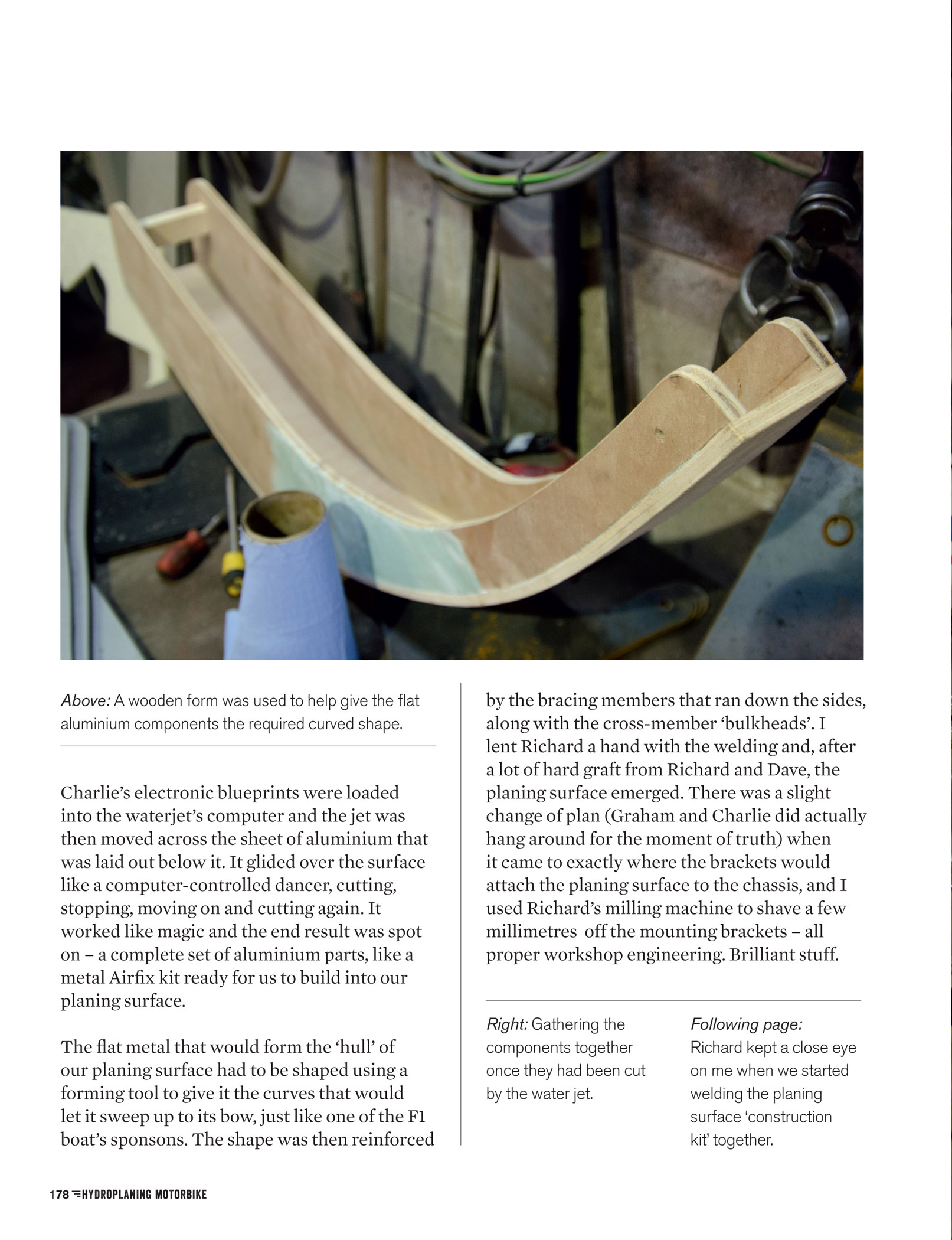
Above: A wooden form was used to help give the flat
aluminium components the required curved shape.
Charlie’s electronic blueprints were loaded
into the waterjet’s computer and the jet was
then moved across the sheet of aluminium that
was laid out below it. It glided over the surface
like a computer-controlled dancer, cutting,
stopping, moving on and cutting again. It
worked like magic and the end result was spot
on – a complete set of aluminium parts, like a
metal Airfix kit ready for us to build into our
planing surface.
The flat metal that would form the ‘hull’ of
our planing surface had to be shaped using a
forming tool to give it the curves that would
let it sweep up to its bow, just like one of the F1
boat’s sponsons. The shape was then reinforced
178 hydroplaning motorbike
by the bracing members that ran down the sides,
along with the cross-member ‘bulkheads’. I
lent Richard a hand with the welding and, after
a lot of hard graft from Richard and Dave, the
planing surface emerged. There was a slight
change of plan (Graham and Charlie did actually
hang around for the moment of truth) when
it came to exactly where the brackets would
attach the planing surface to the chassis, and I
used Richard’s milling machine to shave a few
millimetres off the mounting brackets – all
proper workshop engineering. Brilliant stuff.
Right: Gathering the
components together
once they had been cut
by the water jet.
Following page:
Richard kept a close eye
on me when we started
welding the planing
surface ‘construction
kit’ together.